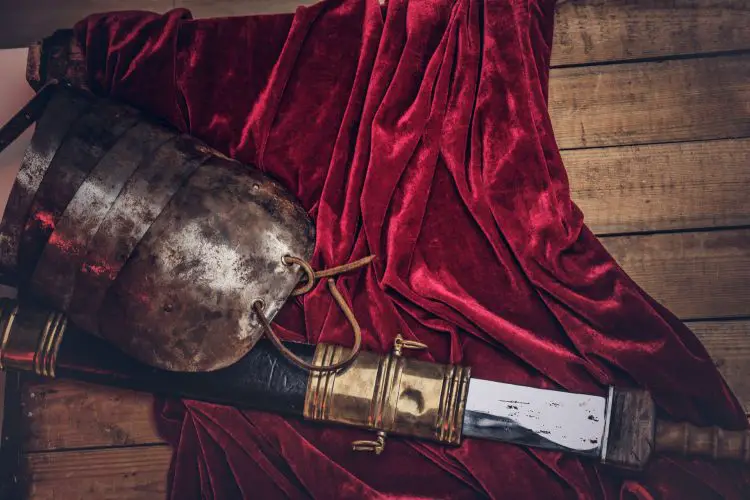As an ARPG veteran with over 5000 hours invested in the genre – starting with the legendary Diablo 2 – I believe I’ve earned the right to offer informed opinions on this fantastic yet sometimes overlooked style of a genre. MOBA and Battle Royale titles often grab the spotlight, but for those craving deep progression and thrilling combat, ARPGs offer a unique experience.
2024 sees a wealth of quality isometric ARPGs battling for our attention. Some dazzle with fluid action, others present mind-boggling character customization, and a few boast worlds you’ll want to lose yourself in.
The question is: Which ARPG is worth becoming become your new obsession? Let’s dive in!
What makes an isometric ARPG great?
Let’s face it, the best ARPGs all have that magic that keeps you hooked. But what makes that magic happen?
- Fighting that feels good. You know, when your attacks have some oomph behind them, enemies react the way you expect, and dodging a big attack just feels right. That’s a must-have
- Loot that makes you go “ooh!” Finding that awesome sword or a chest piece with just the right stats… that’s the rush we’re all chasing, right? The best games make sure the loot keeps things exciting
- Leveling up that matters. Whether it’s spending skill points or seeing those stats go up, nothing beats feeling like your character is growing stronger with every fight
This formula is simple to stick to. Even an ARPG title from a much smaller mobile game studio you’ve never heard of can meet these rather basic requirements.
Of course, I’m not criticizing mobile games, but you know what I mean. As we can see from the historical failure of Diablo Immortal, the platform of ARPG games is neither mobile nor console: This genre is designed to be played on PC!
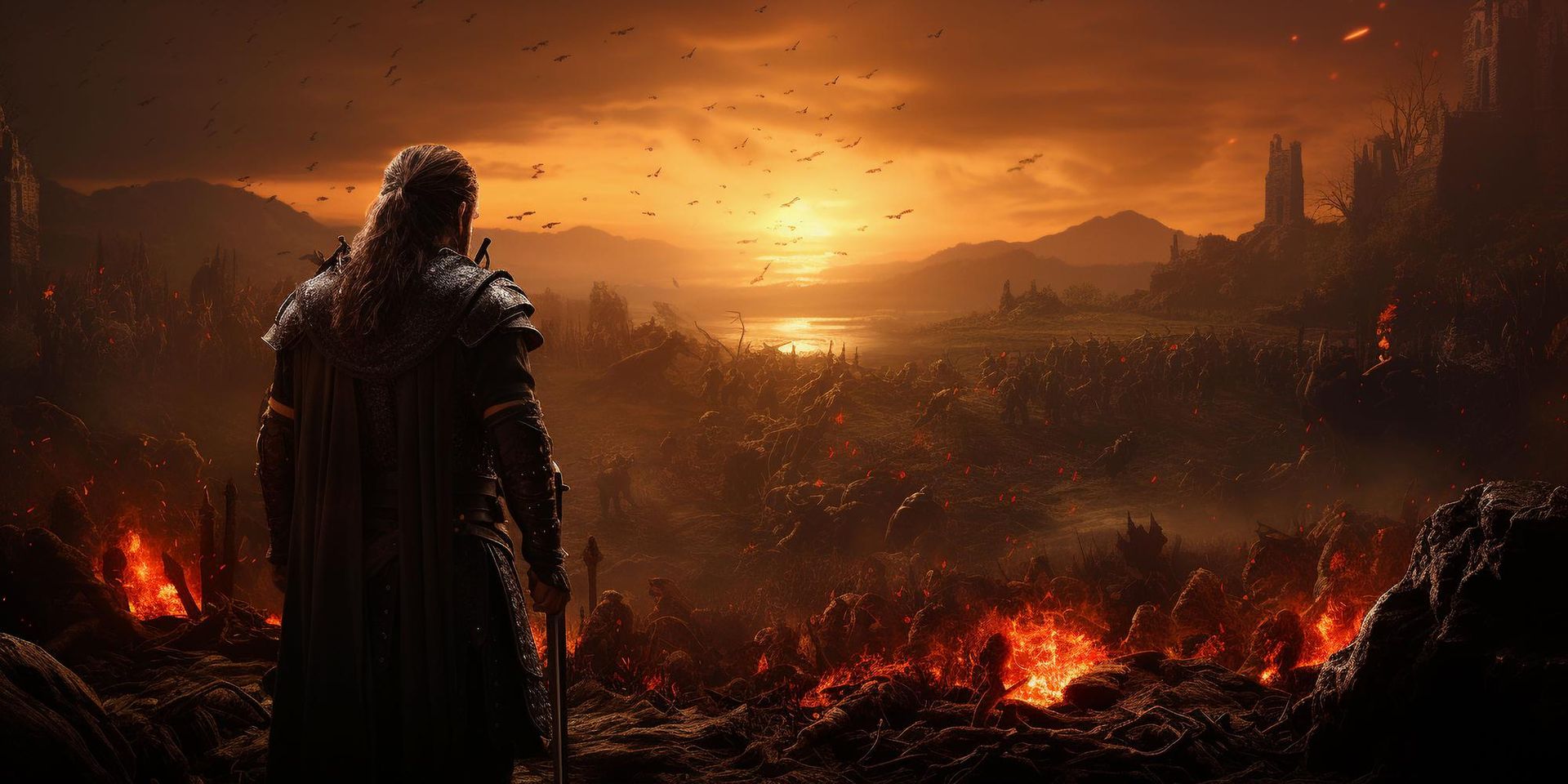
Let’s get back to what we really need to talk about, what takes an ARPG game to the next level?
- Build-crafting heaven: This is where ARPG fans really geek out. Giant skill trees, crazy item combinations, maybe even gems or runes you can socket in gear…the more options, the better
- Bring on the challenge! Beat the story? Awesome. Now give me bosses that’ll wreck me, dungeons that change every time, or a difficulty slider to crank the heat up – that’s what keeps me coming back for more
- A world that sticks with you: Cool visuals and killer sound design are great, but it really hits when the environments tell a story too, or the monsters feel iconic
Then there is the ‘it’ factor.
ARPGs just have that special something. Maybe the community is awesome, making you want to team up. Maybe the devs keep dropping amazing updates. Or maybe you just can’t put your finger on why you’ve sunk 200 hours into it and don’t regret a second. That’s true ARPG greatness.
Taking all this into account, only five games stood out for me:
Path of Exile
Path of Exile… oh boy, that game. Even after 3,000+ hours, I can still jump in and discover something entirely new. The depth of character builds and complex systems keeps me coming back for more.
You are exiled to a continent called Wraeclast. Not exactly a vacation spot, right? That’s exactly what happens to you in Path of Exile.
In the starting screen, you have seven different classes and there will be three sub-classes you will choose from later in the campaign, namely Ascendies:
- Marauder – Juggernaut, Berserker, Chieftain
- Duelist – Slayer, Gladiator, Champion
- Ranger – Deadeye, Raider, Pathfinder
- Shadow – Assasin, Saboteur, Trickster
- Witch – Necromancer, Elementalist, Occultist
- Templar – Inquisitor, Hierophant, Guardian
- Scion
You wake up washed up on a shore. You’re a hardened criminal, cast out from your homeland and forced to fight for survival in this unforgiving land.
Wraeclast is crawling with dangers. Corrupted beings, twisted creatures, and powerful exiles like yourself all vie for dominance. As you explore, you’ll uncover the dark secrets of this place and the ancient gods who hold immense power.
The story unfolds gradually as you journey through different acts, each with its own challenges and memorable characters. You’ll encounter allies who offer guidance and maybe even a helping hand (for a price, of course, this is Wraeclast after all!). But beware, there are also plenty of folks who want nothing more than to see you crumble.
Think of the campaign as your hero’s origin story. It’s where you get your bearings, learn the ropes of combat and loot, and ultimately, discover your true potential.
By the time you reach the end, you’ll be a seasoned exile and finally begin playing the game.
Randomly generated zones overflowing with monsters, tougher bosses, and even better loot… That’s what endgame maps are. You’ll chain these maps together, pushing deeper and deeper, testing your build and chasing those legendary items.
Okay, what kind of items? This is where Path of Exile gets crazy! Your character’s skills, even those epic endgame maps – they’re all items themselves. And each item? Boom! Up to six different properties that can change everything.
Seriously, imagine the insane combinations and build possibilities!
ARPGs ignite a peculiar duality within players—a mix of passion and obsession.
The passion lies in the visceral thrill of combat, the joy of exploring fantastical worlds, and the deep satisfaction of vanquishing foes.
On the other hand, the obsession manifests in the endless grind for loot, the compulsive desire to min-max every character build, and the nagging feeling that there’s always a more perfect gear combination just out of reach.
Thanks to those items, you don’t just rely on random drops in Path of Exile. You can become a master crafter, manipulating currencies and resources to forge legendary weapons, armor, and jewelry with exactly the stats you need for your ultimate build.
Of course, maps aren’t the only endgame content you will get in Path of Exile. You’ve got brutal side bosses, the endless depths of the Delve, and so much more.
Best part?
GGG, the devs behind Path of Exile, keep it all fresh with massive updates every quarter. And those league mechanics? Think of them as three-month seasons, each with a crazy new twist to the gameplay. Rogue exiles, shifting timelines, you name it – these leagues shake things up and give you exciting new ways to build your ultimate exile.
Building that ultimate exile? Buckle up, because this isn’t some casual stroll. Path of Exile isn’t afraid to get hardcore. They’ll drop you into the fray, give you that massive, mind-boggling skill tree, and practically dare you to find your own way:
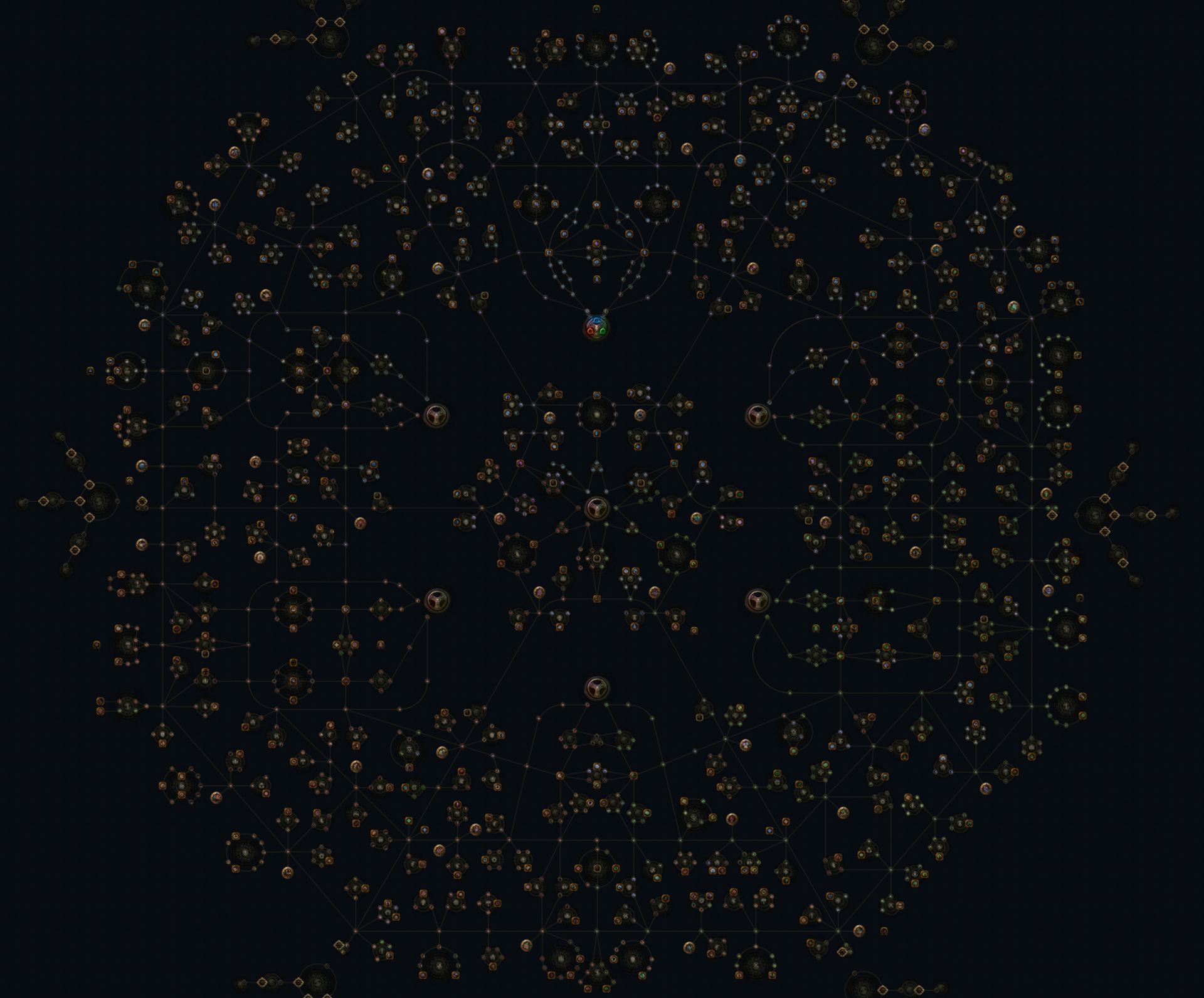
This is just a taste of what PoE’s endgame offers. It’s a deep, complex rabbit hole for those who crave constant challenge, character optimization, and the thrill of acquiring that perfect piece of gear. It’s all about pushing your limits, experimenting with builds, and conquering increasingly difficult content.
Oh, and a side note: Remember those classes I mentioned before? They don’t limit you in any way, they are just an indicator of which starting point your character will get in that skill tree. You can be a Berserker that summons 20+ skeletons to fight for you if you are a masochist.
Pros:
- Unmatched build depth
- Challenging endgame
- Frequent content updates
- Dedicated community
Cons:
- Extremely complex
- Visual clutter
Last Epoch
Now for a game that truly surprised me, Last Epoch.
Last Epoch has firmly established itself as the game for a specific kind of ARPG addict – the kind that likes depth, satisfying build crafting, and a challenge that keeps you invested for hundreds of hours. If Path of Exile is a sprawling metropolis of complexity, Last Epoch feels like exploring a promising new frontier. And that new frontier managed to hook me up for 200 hours straight.
In Last Epoch you’re a time traveler cast out of your era. Each zone harbors secrets of the past, present, and possible futures. And unlike many ARPGs, the story feels meaningful and integrated – it’s not just an excuse to get you to the next loot pile (though there are plenty of those too!).
Just like Path of Exile, Last Epoch offers a lot of classes:
- Primalist: Wild shapeshifting and nature magic
- Rogue: Blinding speed, traps, and shadowy strikes
- Mage: Command the elements with destructive force
- Acolyte: Master necromancy and dark rituals
- Sentinel: Unstoppable juggernaut clad in heavy armor
Then layer on a Mastery class, further specializing your hero into possibilities like a fire-wielding Beastmaster, a lightning-fast Bladedancer, or a Lich commanding endless undead hordes.
The campaign in Last Epoch is a well-tuned journey, but the real game starts when you hit the Monolith of Fate – their endgame map system. Battle through increasingly warped timelines, choose modifiers that ramp up risk and reward, and face brutal bosses to climb higher.
Of course, it’s unfair to compare the endgame of a newly released game to the depth of Path of Exile. However, the current endgame loop – entering the monolith, clearing timelines, raising corruption, and repeating – feels somewhat repetitive.
While the two dungeons offer some variety and an arena where you fight with a horde of enemies (which has its own leaderboard if you are interested), the lack of diverse endgame bosses and reliance on simply increasing enemy stats rather than introducing new mechanics limits the game’s long-term appeal.
But just like PoE, you may expect regular content updates to keep things fresh, and let me tell you something: The devs are working hard on this game.
If there is something that Last Epoch cannot do yet, there is an element that it has already executed wonderfully.
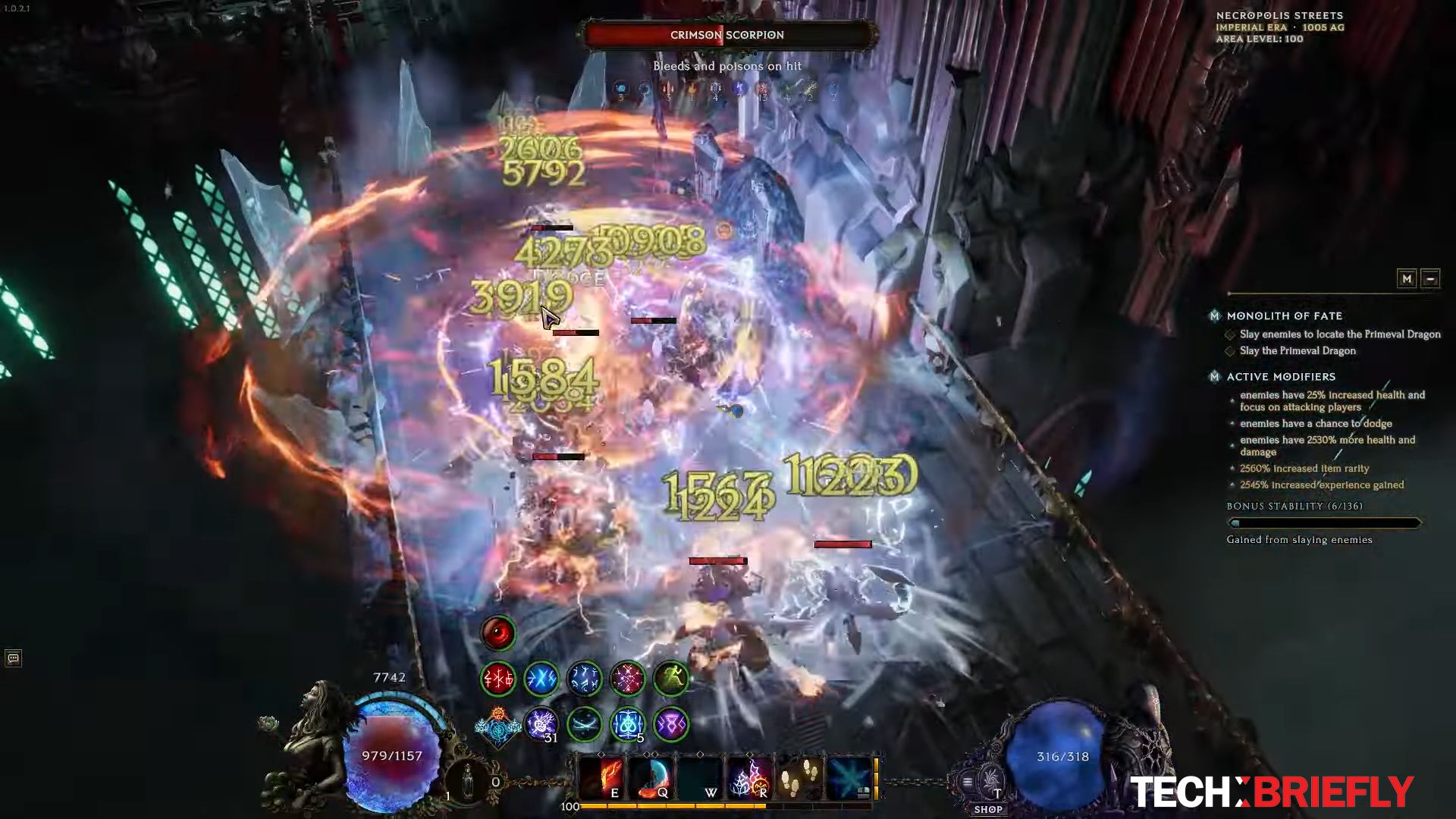
In Last Epoch, unlike most ARPGs, every single skill you use has its own customizable skill tree. Want those fireballs to explode on impact, chain between enemies, or leave a scorched trail? You got it. This opens up a level of character building that feels liberating after the stricter confines of some other games.
Just like PoE, Last Epoch gives you powerful tools to perfect your gear by crafting it. Break down unwanted loot for crafting shards, then use those shards to add affixes, upgrade existing stats, or even fracture items for a chance at rare modifiers. Glyphs and runes further specialize your crafting process, letting you protect your item’s potential or guarantee certain outcomes.
You can see this crafting system in many games, but I really liked the way Last Epoch interpreted it and it does not shy away from allowing you to make a deep min-max without overwhelming you with the complexity of crafting.
If you’re the kind of ARPG player who loves…
- Deep, customizable skill and character builds
- Crafting systems that empower you rather than frustrate you
- Content that takes skill and dedication to master
- A promising future full of updates and expansions
… then Last Epoch is absolutely worth exploring. Its depth won’t disappoint, and it brings a refreshing perspective to a genre that sometimes feels a bit too familiar.
Pros:
- Deep, flexible customization
- Rewarding yet simple crafting system
- Engaging story
- Offline mode
Cons:
- Repetitive endgame loop
- Limited boss variety
Torchlight II
Torchlight 2 was a delightful romp and a worthy successor. I’ve sunk a good chunk of hours (around 500) into it, and it never ceases to put a smile on my face. While it might not have the brain-melting complexity of some other ARPGs, it’s a charming, action-packed experience that’s just so darn fun to play.
If you’re wondering why I didn’t opt for the newer versions, Torchlight 3 and Torchlight Infinite, there are a few reasons.
Torchlight 3, while boasting upgraded graphics, doesn’t quite capture the same magic as Torchlight 2. It lacks the depth and engaging features that made the original so beloved. It feels like a downgrade with fewer skills, no optional areas, side quests, gems, or fishing, and it’s missing that special something that made its predecessor shine.
As for Torchlight Infinite, I feel it’s more successful as a mobile game than a true PC-centric ARPG experience, much like Diablo Immortal. The core essence of ARPGs lies in their PC roots, and unfortunately, Torchlight Infinite doesn’t fully deliver on that front. This is why, even in 2024, Torchlight 2 remains a fantastic and timeless ARPG alternative!
A world in need of heroes, and your furry friend is here to help! You find yourself in the vibrant world of Torchlight, thrust into a conflict caused by a mysterious threat. Think of it as a cartoony cousin to Diablo, full of vibrant colors and quirky characters.
From the brawny Engineer, the gun-toting Outlander, the feral Berserker, or the spell-slinging Embermage, each class offers a unique way to vanquish evil (and collect shiny loot). And yes, your trusty pet is right there with you, fighting bravely and carrying those all-important potions.
The campaign? Let’s call it a grand tutorial. Think of it as your warm-up act. You’ll explore varied landscapes, battle fantastical creatures, and unveil a story with just enough intrigue to keep you pushing forward. But the real fun is unleashed when the credits roll.
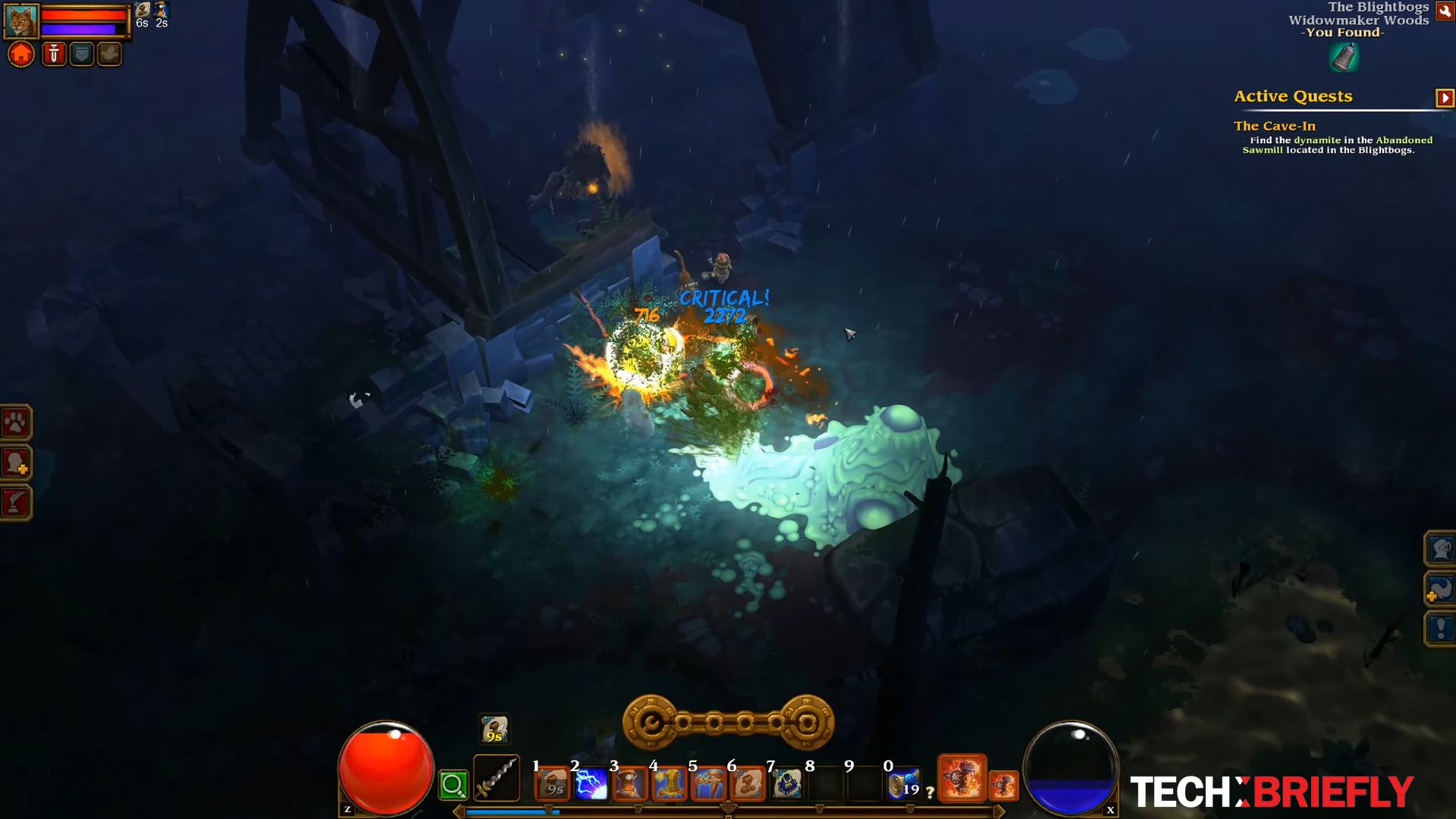
The endgame of Torchlight 2 is a glorious symphony of loot and mayhem. You will find yourself in randomly generated dungeons, facing tougher bosses, and collecting an enormous amount of loot – oh, the beautiful loot! You’ll be hoarding weapons, armor, and gems like a greedy dragon, constantly tweaking your build in pursuit of that perfect setup.
What sets Torchlight 2 apart? Simplicity with a side of charm. It’s not trying to revolutionize the genre. Instead, it focuses on delivering tight, satisfying ARPG gameplay. Combat is fluid and fun, skills are flashy and explosive, and there’s an undeniable joy in seeing your character level up and get decked out in shiny new gear.
The reason why we are still talking about its name in 2024 is Torchlight 2’s incredible modding community. Want a steampunk-themed adventure? Fishing minigame? Play as a necromancer with an army of skeletons at your command? There is likely a mod for that.
Pros:
- Fast-paced, satisfying combat
- Charming world
- Accessible and fun gameplay
- Incredible modding support
Cons:
- Somewhat predictable storyline
- Limited endgame
- No new official content or updates
Grim Dawn
The anticipation for Path of Exile’s new league was almost unbearable, so naturally, I had to revisit the game that inspired my article. No matter how many times I delved into its dark world, those 250 hours were just a taste of the surprises waiting to be discovered.
Grim Dawn delivers a potent dose of old-school ARPG charm, wrapped in a deliciously dark and unforgiving package. If you yearn for the intricate character builds and brutal challenge that defined classics like Diablo II, this is a journey into darkness worth taking.
Cairn is a world on the brink of collapse. Grim Dawn paints a desolate, atmospheric landscape steeped in decay and desperation. This isn’t your vibrant fantasy epic; it’s a land where survival is a constant struggle and hope flickers faintly in the shadows.
Unlike the previous three games, Grim Dawn embraces a dual-class mastery system. The freedom to experiment is intoxicating. Will you be a righteous Inquisitor purging evil with holy fire and steel? A cunning Necromancer commanding legions of the dead? Or perhaps a primal Shaman channeling the wrath of the storm? The combinations are numerous and deeply satisfying to explore.
The campaign serves as a grim introduction to this dying world. You’ll battle monstrous horrors, encounter desperate factions, and slowly piece together the shattered fragments of a broken civilization. Grim Dawn’s story is delivered through environmental details, cryptic lore, and the haunted eyes of the survivors you encounter.
However, the true heart of Grim Dawn lies beyond the final boss. Prepare yourself for brutal roguelike dungeons, legendary bosses that will put your skills to the ultimate test, and a loot system filled with powerful gear and intricate components begging to be combined.
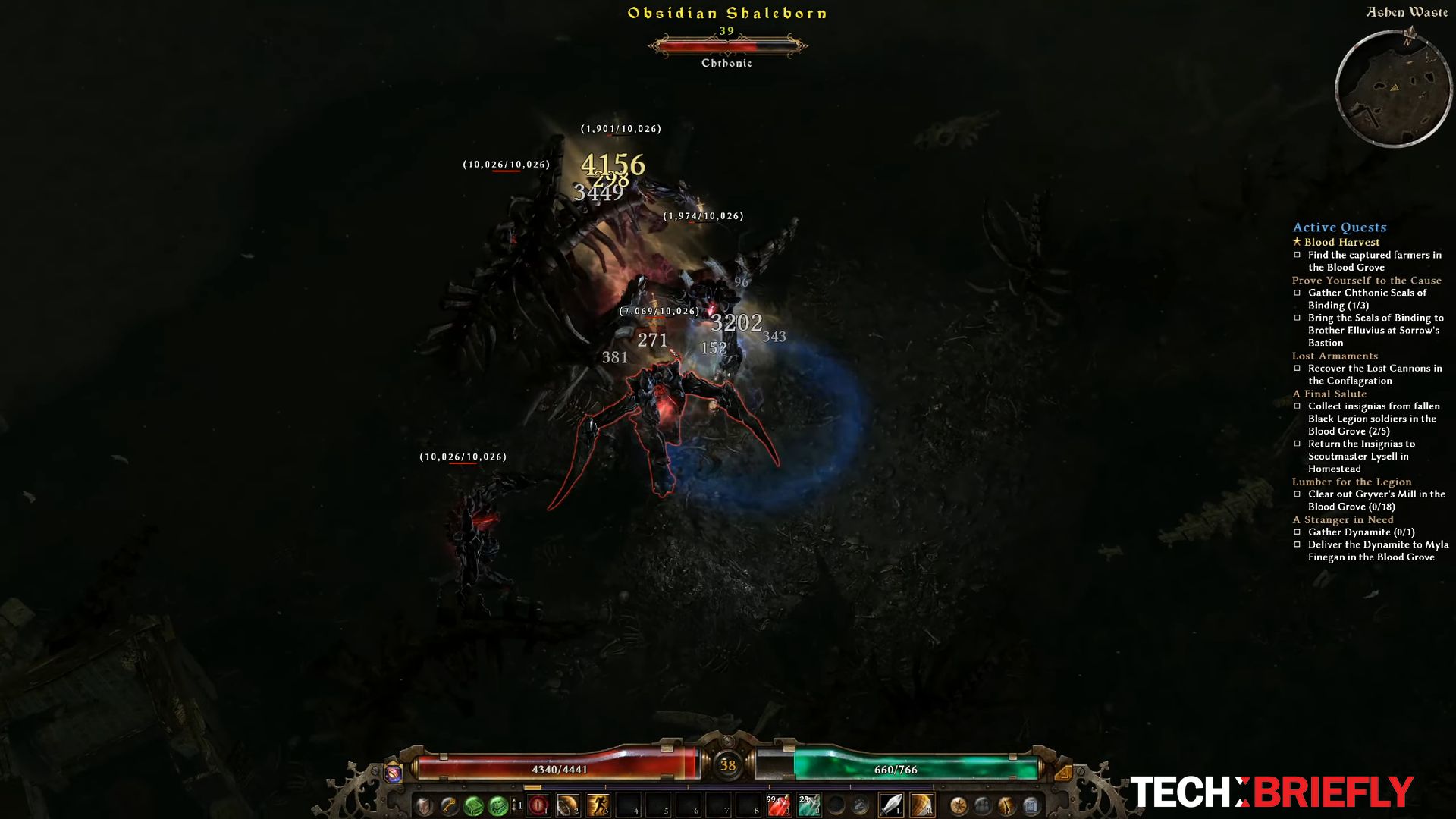
Be warned: Grim Dawn doesn’t hold your hand. This game demands a tactical approach and a willingness to learn from failure. Enemies hit hard, elite creatures can wipe you out in seconds, and a poorly planned build will crumble quickly. Success requires both mechanical skill and meticulous build planning.
The Devotion system adds another layer of power and customization to your character. Scattered throughout the world are shrines. Activating these shrines grants you Devotion points, which you can invest in a celestial skill web called the Devotion map.
This map is divided into constellations, each containing various nodes. By spending Devotion points to unlock these nodes, you gain access to powerful passive skills, stat boosts, and even unique skills you can bind to your character’s attacks or abilities.
The Devotion system allows you to further refine your playstyle and squeeze even more power out of your chosen build.
This game, which offers everything a Diablo II fan could want, unfortunately, remained in the shadow of its competitors.
Pros:
- Deep, satisfying character customization with countless build possibilities
- Grim, atmospheric world with a rich sense of lore
- Challenging, tactical combat
Cons:
- Visually dated compared to some newer ARPGs
- The story takes a backseat to the gameplay loop
Diablo 4
I have so much to say… A huge budget, a great open-world idea (even though it reminds me of Lost Ark), Diablo’s legacy and a big disappointment…
Diablo 4… the name itself used to send shivers down my spine. Like many, I grew up in the shadow of Sanctuary, battling the forces of Hell in a never-ending quest for loot.
Don’t get me wrong, Diablo 4 isn’t a bad game. The campaign offers a decent, if somewhat predictable, storyline. But where it truly falters is in its endgame. The systems feel shallower, the loot less inspiring. My drive to experiment with new builds, the core of any great ARPG, has fizzled out.
Those thrilling build possibilities Grim Dawn offered, where I could be a lightning-wielding Shaman or a poison-infused Nightblade? Diablo 4 feels far more restrictive. Although the idea of an open-world raid is really great, the feeling of “What am I doing right now?“, which I often experience in Lost Ark, is always right before my eyes in Diablo 4.
The skill tree promises complexity but ultimately delivers fewer truly distinct paths. Compared to other ARPGs, I wish a game with a much bigger budget and produced by Blizzard would offer more than this.
Perhaps my expectations were impossibly high. Maybe in my longing for that classic Diablo II feeling, I set myself up for disappointment. But where Path of Exile rewards my dedication with endless surprises, Diablo 4 leaves me feeling like I’ve seen the best of what it has to offer far too quickly.
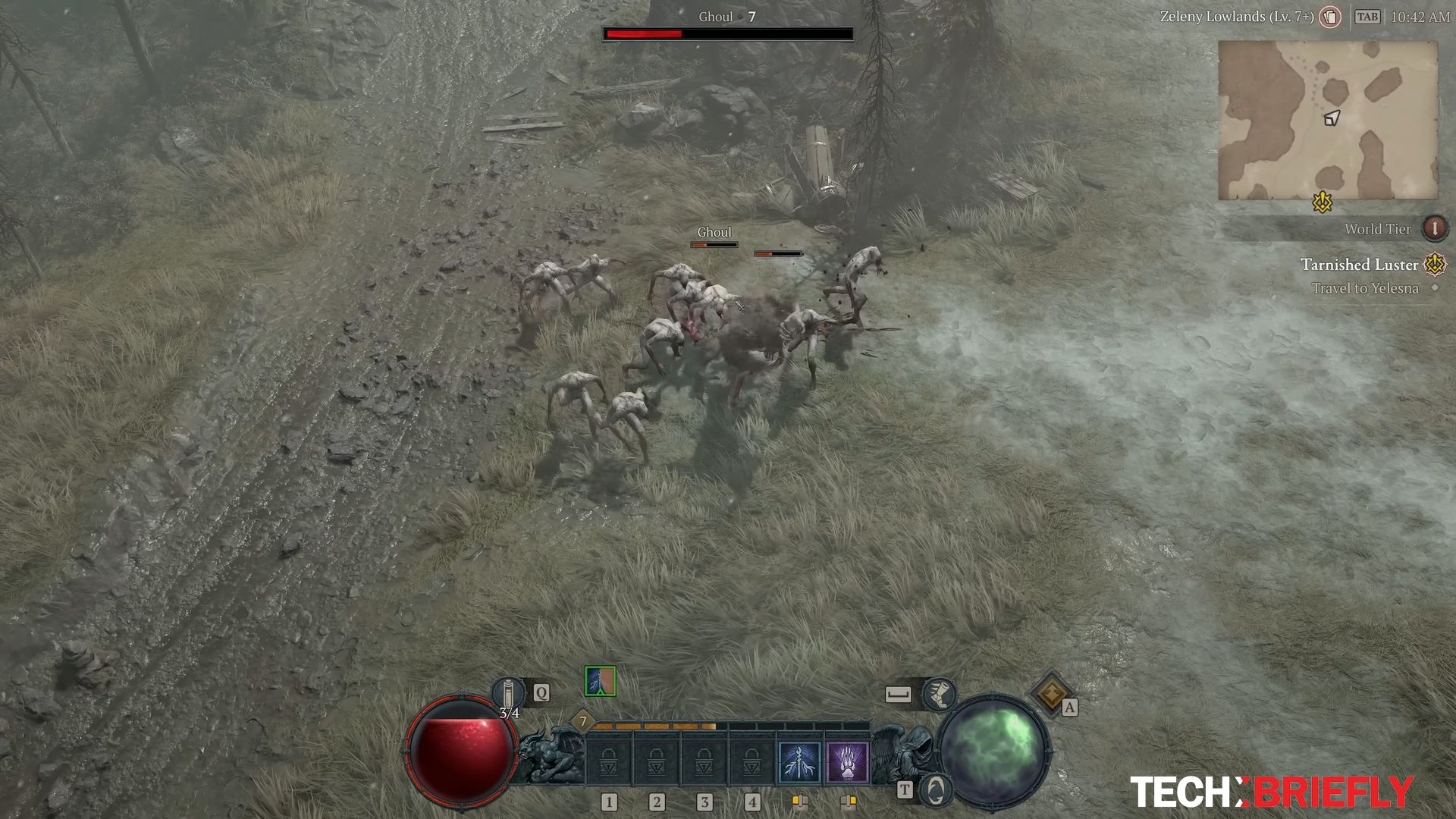
Here’s the thing: Diablo 4 is a perfectly serviceable ARPG. It looks the part, it plays well enough, and it’ll scratch that itch for a while. However, it lacks the staying power of its predecessors, or the intricate systems that have long-time fans like me coming back for more.
And I’m not alone in this. You, me, and all ARPG fans are aware of this.
Perhaps Blizzard is also aware of it, after all, they recently made an agreement with Microsoft to bring their quadruple-A game to Xbox Game Pass in order to attract a larger player base to Diablo 4. A wasted potential, but let’s hope it’s not the end of the story and Diablo 4 can take the place it deserves with future patches. But it seems that even the Diablo developers don’t know what they are doing.
Pros:
- Gorgeous visuals
- Open world exploration
- Dark and mature storytelling
Cons:
- Horrible endgame activities
- Simplified itemization
- Influence of mobile game design
Of course, five games could never fully represent the incredible breadth of the hack-and-slash genre, but these titles embody the core elements I crave in this thrilling type of game.
Don’t be afraid to play what you want and experiment with different games – you might just discover your next obsession!
Featured image credit: fxquadro/Freepik.

